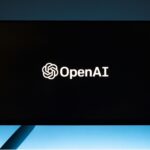Introduction
For years, artificial intelligence (AI) has been surrounded by hype. But as we move deeper into 2025, the conversation has shifted. AI is no longer a futuristic experiment—it’s becoming a core driver of business transformation.
The latest McKinsey survey makes one thing clear: AI is no longer just adopted, it’s rewiring how companies operate. From revenue growth and cost reduction to workflow redesign and governance, the impact is spreading across industries.
Here’s what the data reveals—and what it means for businesses aiming to stay competitive.
Key Findings from the McKinsey Survey
1. AI Adoption is Nearly Universal
- 78% of organizations now use AI in at least one business function.
- 71% are already leveraging generative AI (GenAI), with marketing, IT, and product development leading adoption.
This shows that AI is no longer siloed—it’s entering the mainstream of operations.
2. Workflows are Being Rewired
- 21% of companies have redesigned workflows to embed AI at the core.
- This isn’t about plugging in a chatbot—it’s about rethinking processes from the ground up.
Organizations that restructure around AI are already seeing efficiency and performance gains.
3. Leadership Drives Impact
The survey highlights a striking trend:
- CEO-led AI governance delivers the biggest bottom-line impact.
When AI initiatives are championed at the top, they move beyond pilots into scaled transformation.
4. Risks Are Taken Seriously
Companies aren’t blind to the challenges. The top risks being addressed include:
- Cybersecurity
- Intellectual property (IP) protection
- Regulatory compliance
This proactive approach shows that AI is maturing from “experimental” to “enterprise-ready.”
5. The Talent Challenge
The AI talent war is intensifying:
- Nearly half of employers say they’ll need more data scientists within the next year.
Organizations that invest in workforce reskilling and talent acquisition will be best positioned to harness AI effectively.
6. The Business Impact: Early Wins, Bigger Goals Ahead
- Early adopters report revenue increases and cost reductions.
- However, enterprise-wide transformation is still a work in progress.
The lesson: pilots deliver quick wins, but scaling AI across the business is where the real value lies.
What This Means for Businesses in 2025
The survey points to a crucial insight: AI value doesn’t come from experimenting—it comes from rewiring.
That means:
- Top-down leadership: CEOs must own the AI agenda.
- Clear roadmaps: Define where AI fits into workflows, not just projects.
- Reskilling the workforce: Equip teams with AI fluency to maximize adoption.
- Scaling smart: Move from pilots to enterprise-wide deployment with clear governance.
The organizations that think big, move fast, and scale smart will define the competitive landscape of the next decade.
Conclusion
2025 marks the tipping point where AI moves from hype to hard results. With adoption widespread, the differentiator is no longer who uses AI—but who uses it best.
The companies that redesign workflows, empower talent, and commit leadership to AI transformation will not only see early wins but also secure a long-term competitive edge.
The takeaway is clear: AI isn’t just a tool, it’s the new operating system for business.








